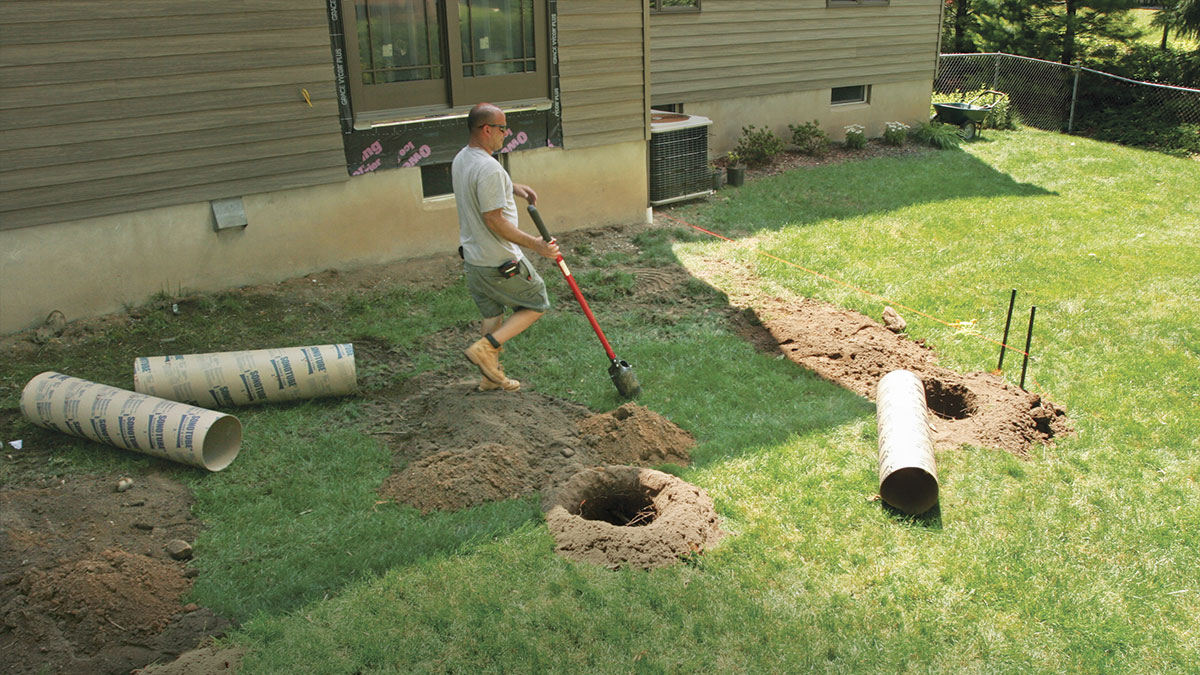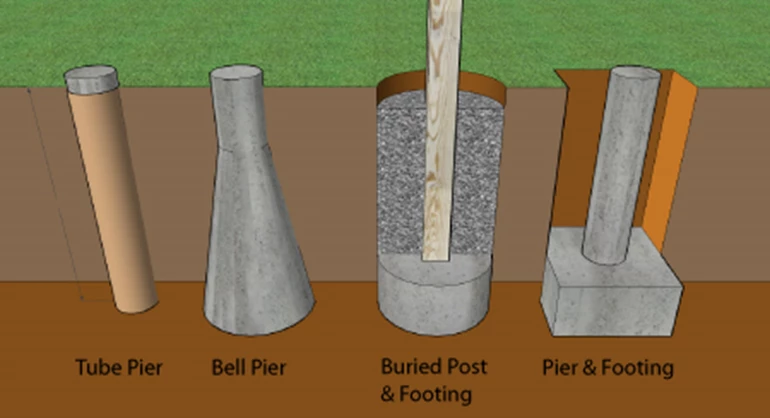Picking the Right Deck Footings for Security and Longevity
When it involves building a deck, one of the most critical decisions you will certainly make is picking the appropriate footings for stability and sturdiness. The durability and safety of your deck depend greatly on the kind of footings you select, as they supply the vital support and security to withstand the examination of time. With a myriad of options offered, it can be frustrating to identify which grounds are best suited for your details needs. In this conversation, we will check out the various kinds of deck grounds, think about the vital aspects to consider when making a decision, and explore the advantages and disadvantages of different choices. By the end, you will have a more clear understanding of the choices handy and be better furnished to make an educated decision for your deck task.
Types of Deck Grounds
These grounds are composed of a round opening filled up with concrete, which gives a solid structure for the deck blog posts. Concrete pier grounds are relatively simple to mount and use superb security, making them a preferred selection for numerous deck projects.
These grounds are installed by screwing them right into the ground, which produces a protected foundation for the deck. They additionally enable for easy change and progressing of the deck if needed.
Alternatively, some builders decide for precast concrete footings. These grounds are made from durable concrete and can be found in numerous sizes and shapes to fit different deck styles. Precast concrete footings are practical to install and give a steady base for the deck structure.
Lastly, one more option is the post-in-anchor footing system. This sort of footing entails driving a metal support into the ground and affixing it to the deck article. It provides adaptability in terms of positioning the deck blog posts and appropriates for decks with lightweight structures.
When choosing the right kind of deck ground, it is vital to think about variables such as dirt conditions, deck load, and local building regulations (Deck Footings). Consulting with an expert contractor or structural engineer can assist make certain the suitable ground is picked for a safe and steady deck
Elements to Take Into Consideration When Choosing Footings
When choosing the proper grounds for a deck, it is essential to carefully consider different aspects such as dirt problems, deck load, and adherence to neighborhood building ordinance. These elements play a significant function in making sure the security and longevity of the deck structure.
The type of soil on which the deck will be built determines the kind of grounds needed. On the other hand, decks constructed on clay or large soils may call for grounds that can accommodate the dirt's propensity to broaden and contract.
An additional crucial element is the deck load. The weight of the deck, consisting of the materials used and any prospective live lots such as furniture or gatherings, must be considered when picking footings. The grounds should be designed to birth the weight of the deck and distribute it equally to avoid any type of structural problems or failures.
Last but not least, adherence to local structure codes is vital. Building codes differ from region to region, and it is important to adhere to the certain requirements established by the local authorities. Deck Footings. These codes make certain that the deck is built securely and meets the essential requirements for architectural stability and load-bearing ability
Concrete Footings: Advantages And Disadvantages

Concrete grounds supply several advantages and disadvantages when made use of as the structure for a deck. On the favorable side, concrete grounds give superb security and durability.
Another benefit of concrete footings is their flexibility. They can be poured into various forms and dimensions to fit different deck styles and setups. Concrete footings can be customized to fit the particular needs and requirements of the deck read what he said framework.
Nonetheless, there are additionally some disadvantages to utilizing concrete footings. One major disadvantage is the price and labor associated with their installation. Concrete footings call for excavation and frequently require the help of heavy equipment. This can raise the general cost of the deck task and might need professional aid.

Helical Piers Vs. Sonotubes: Which Is Better?
In thinking about the structure choices for a deck, the contrast between helical piers and sonotubes is vital in establishing the superior choice. Helical piers, also called screw piles, are steel shafts with helical plates connected to them. They are turned right into the ground making use of hydraulic equipment, offering a sturdy and stable structure for the deck. On the other hand, sonotubes are cylindrical types made from cardboard or fiber material that are full of concrete. They are positioned in a hole went into the ground and offer support for the deck.
When it comes to stability and resilience, helical piers have the top hand. The helical plates on the piers produce a strong grasp with the soil, avoiding any movement or changing of the deck. This is specifically useful in locations with unstable or shifting soil conditions. Sonotubes, on the various other hand, rely entirely on the concrete filling for security, which may not use the same level of stamina and resistance.
In terms of setup, helical piers are fairly less complicated and faster to mount compared to sonotubes. The hydraulic machinery used to twist the piers right into the ground makes certain a reliable and fast procedure. Sonotubes, on the other hand, need excavating openings and putting concrete, which can be labor-intensive and time-consuming.
Additionally, helical piers are a more functional choice. They can be utilized in various soil problems and can be changed or reinforced if required. Sonotubes, on the other hand, may call for additional assistance, such as rebar, in certain soil conditions or areas with high load demands.
Selecting the Right Footings for Your Deck's Dimensions
For optimum architectural stability, it is necessary to carefully choose the ideal grounds that align with the measurements of your deck. The dimensions of your deck, including its length, width, and elevation, play a substantial duty in figuring out the type and dimension of footings required.
When choosing grounds for your deck, it is necessary to take into my blog consideration the load-bearing capacity of the soil. The weight of the deck, integrated with the weight of any type of furniture or people on it, puts in a considerable force on the grounds (Deck Footings). As a result, it is essential to choose footings that can adequately sustain this weight without sinking or changing in time.
The shapes and size of the footings ought to additionally be thought about. Bigger decks with better measurements call for bigger footings to offer enough stability and support. The form of the footings, whether they are square or rounded, relies on the style and design of the deck. Furthermore, the deepness at which the grounds are installed need to be identified based on the frost line in your region to avoid any heaving or changing because of freezing temperatures.
Verdict
In verdict, choosing the appropriate deck footings is important for making sure stability and longevity. Factors such as the type of footings, the deck's dimensions, and the pros and his response cons of different choices must be considered.
These footings consist of a cylindrical opening filled up with concrete, which provides a strong foundation for the deck posts. Concrete pier grounds are reasonably simple to set up and use outstanding stability, making them a preferred choice for lots of deck tasks.
Precast concrete grounds are convenient to mount and supply a secure base for the deck framework.
It supplies versatility in terms of placing the deck articles and is ideal for decks with lightweight structures.
Concrete grounds supply several advantages and disadvantages when made use of as the structure for a deck.